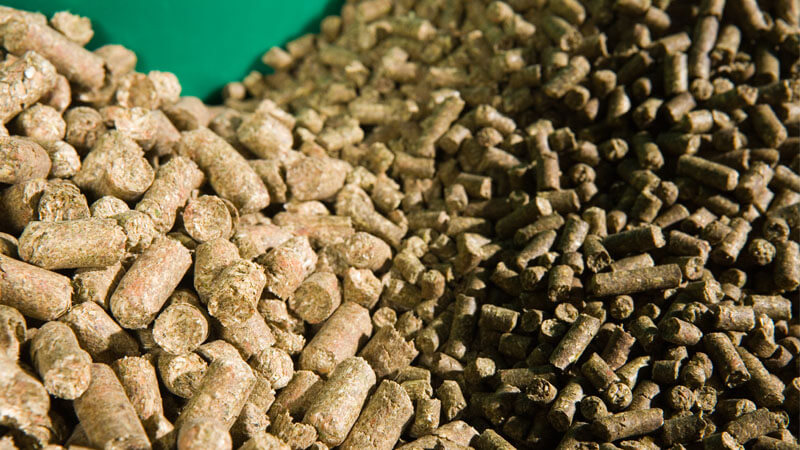Animal Feed and Food Testing:
 The Indian animal feed market is driven by the increasing government support in the country. After
the liberalization of the Indian economy in the early 1990s, the animal feed industry was presented
with new opportunities. The industry continues to have substantial growth potential owing to
increasing domestic consumption of animal-based products, rising livestock population, and growing
dependence on imports.
The Indian animal feed market is driven by the increasing government support in the country. After
the liberalization of the Indian economy in the early 1990s, the animal feed industry was presented
with new opportunities. The industry continues to have substantial growth potential owing to
increasing domestic consumption of animal-based products, rising livestock population, and growing
dependence on imports.
 Market Segmentation
Animal feed are food items produced or grown for the consumption of livestock or poultry. These
products are carefully grown and blended with numerous nutritional ingredients that are essential
to maintain the health of animals. Some of the common feeds include pasture grasses, hay and
silage crops, cereal grains, and other by-products of food crops, such as pineapple bran, brewers'
grains, and sugar beet pulp. The animal feed industry encompasses various sectors such as cattle,
poultry, and aquaculture.
Market Segmentation
Animal feed are food items produced or grown for the consumption of livestock or poultry. These
products are carefully grown and blended with numerous nutritional ingredients that are essential
to maintain the health of animals. Some of the common feeds include pasture grasses, hay and
silage crops, cereal grains, and other by-products of food crops, such as pineapple bran, brewers'
grains, and sugar beet pulp. The animal feed industry encompasses various sectors such as cattle,
poultry, and aquaculture.
The animal feed market in India is segmented on the basis of product into:
- Poultry
- Cattle
- Aqua
Among all of these, poultry feed exhibits the most popular product type in the market due to the highly organized poultry sector in India. The report also covers the regional markets of animal feed in India, like North India, South India, East India, and West India.
Market Analysis
The Indian animal feed market is driven by the rising dairy industry, backed by the White Revolution 2.0, which has resulted in the rapid growth of the cattle population. Currently, India has the largest cattle population in the world, thereby becoming a significant market for cattle feed. The demand for commercial cattle feed is projected to increase in India, as the dairy industry structure is becoming more organized. In addition to this, the government is also planning to launch schemes and policies under the 12th Five Year Plan, which are aimed at improving the overall status of the animal feed industry to provide for future demand.
The market is further aided by the emergence of non-traditional feed ingredients and technological advancements as well as innovations, such as the creation of genetically modified animal feed ingredients. The market is finding obstruction due to frequent disease outbreaks and high import duties on feed ingredients.
Animal feed is used to provide the necessary nutrients for the growth, maintenance, and reproduction of animals. The specific uses of animal feed can vary depending on the type of animal and its intended use, but some common uses include:
- 1. Livestock production: Feed is used to support the growth and maintenance of animals such as cattle, pigs, chickens, and sheep, which are raised for meat, milk, and eggs.
- 2. Poultry production: Feed is used to support the growth and maintenance of chickens and other poultry, which are raised for meat and eggs.
- 3. Dairy production: Feed is used to support the growth and maintenance of cows and other dairy animals, which are raised for milk production.
- 4. Aquaculture: Feed is used to support the growth and maintenance of fish and other aquatic animals, which are raised for food and other purposes.
- 5. Pet food: Feed is used to support the growth and maintenance of pets such as dogs and cats, which are kept as companions.
- 6. Animal husbandry: Feed is used to support the growth and maintenance of animals such as horses, camels, and alpacas, which are used for transportation, sport, and other purposes.
- 7. Wildlife: Feed is used to support the growth and maintenance of animals such as deer, elk, and bison in wildlife parks and zoos
- 8. Animal Nutrition research
The specific nutritional requirements of animals can vary depending on their age, breed, and activity level, and feed manufacturers carefully formulate their products to meet these needs.
There are several parameters that are commonly tested in animal feed, including:
- 1. Nutritional content: This includes the levels of protein, fat, fiber, and other essential nutrients in the feed.
- 2. Contaminants:This includes testing for harmful substances such as heavy metals, pesticides, and bacteria.
- 3. Physical characteristics: This includes testing for things like particle size, moisture content, and bulk density.
- 4. Safety & shelf life: This includes testing for pathogenic microorganisms and spoilage indicators such as pH and peroxide value.
- 5. Feed ingredients & additives:This includes testing for specific ingredients and additives, such as antibiotics and growth hormones.
- 6. Mycotoxins: These are toxic compounds produced by certain types of mold that can grow on feed ingredients and can cause a range of health issues in animals.
- 7. Other test such as proximate analysis, amino acid profile, mineral analysis, vitamine analysis, etc.
It's important to note that the specific tests required may vary depending on the type of animal feed and its intended use.
Feed Test as per Indian Standard 7874 Indian Standard 7874 is a standard for the testing of animal feed in India. It provides guidelines for the determination of various parameters in animal feed, including:
- 1. Moisture content: This is the amount of water present in the feed, which can affect its storage and handling.
- 2. Ash content:This is the inorganic residue remaining after the feed has been completely burned, and provides an indication of the mineral content.
- 3. Crude protein: This is the total amount of protein in the feed, which is an essential nutrient for animals.
- 4. Crude fat: This is the total amount of fat in the feed, which is also an essential nutrient for animals.
- 5. Crude fiber:This is the total amount of indigestible plant material in the feed, which can affect the digestibility of the other nutrients.
- 6. Nitrogen-free extract: This is the remaining portion of the feed after the moisture, ash, protein, fat, and crude fiber have been removed, and is mostly composed of carbohydrates.
- 7. Acid detergent fiber (ADF):This is a measure of the insoluble portion of the feed's crude fiber, which can affect the digestibility of the other nutrients.
- 8. Neutral detergent fiber (NDF):This is a measure of the total fiber content of the feed, including both the ADF and other types of fiber.
- 9. Metabolizable Energy (ME) : This is the amount of energy that is available to the animal after accounting for the energy lost in the feces and urine.
- 10. Mineral analysis : : This includes the various minerals such as calcium, phosphorous, magnesium, etc.
- 11. Vitamin analysis : This includes various vitamins such as Vitamin A, E, D, K, etc.
These are the most common tests that are required to be carried out as per Indian Standard 7874, However, depending on the type of animal feed and its intended use, additional tests may be needed.
There are a wide variety of raw materials that can be used to make animal feed, including:
- 1. Grains: These include corn, wheat, barley, oats, and sorghum, which are rich in carbohydrates and provide energy for animals.
- 2. Oilseeds: These include soybeans, sunflower seeds, and cottonseed, which are high in protein and fat.
- 3. Forages: These include hay and silage, which are made from grasses and other plants and are a good source of fiber for ruminant animals.
- 4. By-products: These are materials that are left over from other industries, such as distillers grains from the ethanol industry, and can be used to supplement the protein and energy in animal feed.
- 5. Proteins: These include meals made from soybeans, canola, cottonseed, sunflower, and other oilseeds, which are rich in amino acids and are an important source of protein for animals.
- 6. Minerals: This include various minerals such as calcium, phosphorous, magnesium, etc.
- 7. Vitamins: This include various vitamins such as Vitamin A, E, D, K, etc.
- 8. Medicated feed premix : This includes feed premixes with medicinal compounds such as antibiotics, growth promoters, etc.
- 9. Additives: This includes various feed additives such as enzymes, probiotics, prebiotics, etc.
The specific raw materials used in animal feed will depend on the type of animal and its nutritional needs, as well as the availability and cost of the materials. Feed manufacturers carefully blend different raw materials to create a balanced diet that meets the nutritional needs of the animal.


Testing
Read More
Inspection
Read More
Certification
Read MoreTesting Services
- Drugs & Pharmaceutical Testing
- Cosmetics & Essential Oils Testing
- Medical Devices Testing
- Ayush - Ayurvedic Drug Testing
- Food Products Testing
- Agri Commodities Testing
- Fertilizers and Soil Testing
- Animal Food & Feed Testing
- Water - Drinking Water & Effluent Water Testing
- Industrial Oils and Lubricants & Petroleum Products Testing
- Coal & Coke and Solid Fuels Testing
- Ores & Minerals Testing
- Metals & Alloys Testing
- Plastics, Polymer, Rubber & Rubber Products Testing
- Resins & Adhesives Testing
- Paints, Varnish, Pigments & Surface Coating Testing
- Glass & Ink, Paper & Pulp Testing
- Industrial & Fine Chemicals Testing
- Dyes, Acids and Solvents Testing
- Soaps, Detergents & Toiletries Testing
- Packaging & Packaging Products Testing
- Gold & Silver Assaying & Hallmarking
- Cement, Concrete & Building Materials Testing
- Pollution and Environmental Studies
- Microbiological Assays. Etc.,









